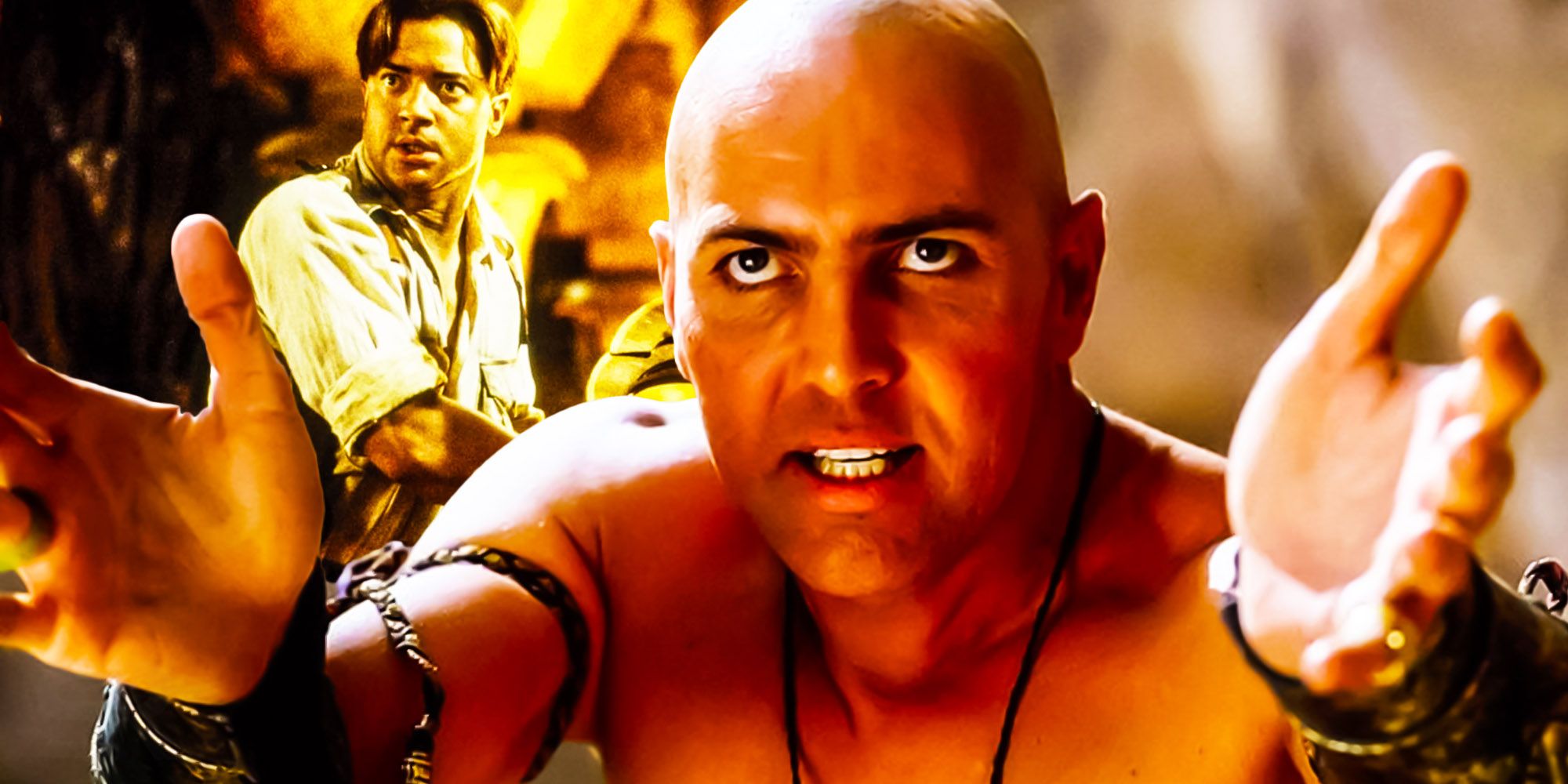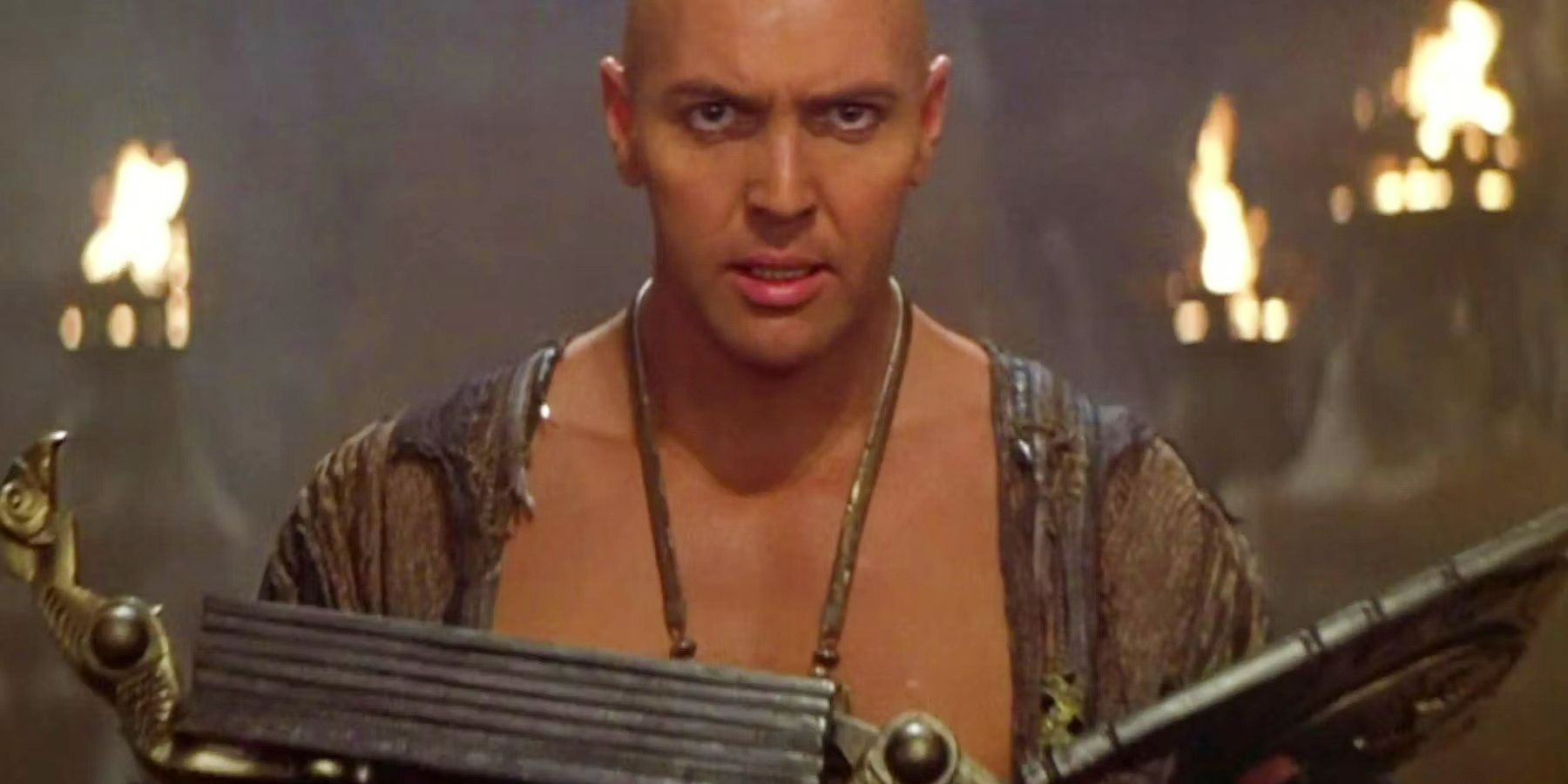As The Mummy's chief antagonist, Imhotep plays a major role in the movie, but was he a real person? The Mummy is of the finest action-adventure films of the 1990s, featuring exciting set-pieces, memorable one-liners, and charming performances from Brendan Fraser and Rachel Weisz. But, as a movie based around black magic, featuring the malevolent undead and carnivorous scarab beetles that can strip the flesh of a human being in seconds, it takes some creative liberties with its ancient Egyptian source material.
In The Mummy, Imhotep is portrayed as the high priest of Pharaoh Seti I. The film's prologue, set in 1290 BC, establishes that Imhotep had an affair with Anck-su-namun, the Pharaoh's mistress. Imhotep and Anck-su-namun murder the Pharaoh after he discovers their illicit love before the latter takes her own life. Imhotep tries to resurrect Anck-su-namun but is stopped by the Medjai, the Pharaoh's royal guard, and buried alive in a sarcophagus with scarabs. In 1923, his tomb is opened by Fraser's Rick and Weisz's Evelyn, and Imhotep is accidentally reanimated by Evelyn reading from the Book of the Dead. Imhotep's curse unleashes the ten plagues of Egypt, and he attempts to recover Anck-su-namun's preserved organs to try and resurrect her once more before being stopped by Rick and Evelyn.
Imhotep was a real person, but not as The Mummy portrays him. Unsurprisingly, the historical figure was not a tragic villain necromancer who came back from the dead to run amok in 1920s Cairo. He was the chief architect to Pharaoh Djoser, who some scholars believe reigned between 2630 and 2611 BC, though there is some difference of opinion on the exact dates. The real Imhotep might not have dealt in death magic as in The Mummy, but he left a different kind of lasting legacy; some believe he helped developed the step pyramid at Sakkara. Imhotep is also believed to be the first architect known by name in recorded history. A wise counselor to Djoser, after his death he became known as a patron to scribes, and in the city of Memphis, he eventually became deified as a god due to his skills for healing.
Why The Mummy Changed Imhotep's History
The Mummy understandably changes pretty much everything about Imhotep's backstory. While his renown as a political advisor and pioneering architect is interesting information in itself, they are not particularly compelling details for creating a frightening villain in The Mummy's breezy summer blockbuster franchise. Changing his profession to that of a mystical high priest allows director Stephen Sommers and his team more reason for Imhotep to dabble in fictitious necromancy. His treason, murder of his Pharaoh, and ill-fated romance with Anck-su-namun inject tragic melodrama into The Mummy's story, which are qualities that building planning meetings arguably lack.
However, there are still trace elements of the historical figure in The Mummy's characterization, and not just because of his political proximity to the Pharaoh. That Imhotep was not only a mortal but a commoner who became a god in the eyes of ancient Egyptians aligns with The Mummy's version of him as a legendary and supernatural figure whose black magic forces Fraser's tactile protagonist out of his depth. That Imhotep was also a figure associated with healing and regeneration by ancient Egyptians tallies with the film's presentation of him as obsessed with resurrecting his lost love. The Mummy radically changes Imhotep's story, but not entirely the essence of who he was and what he became in the minds of ancient Egyptians.


